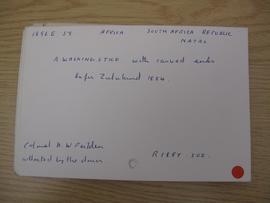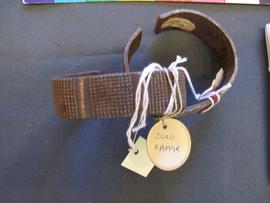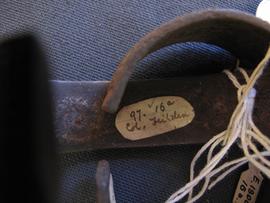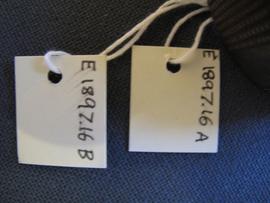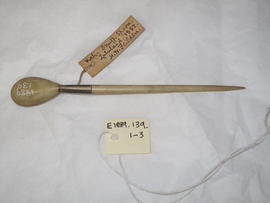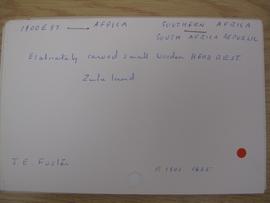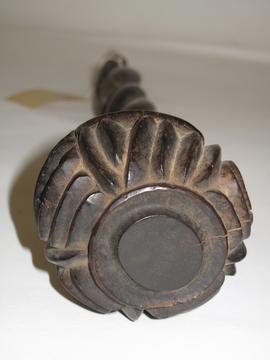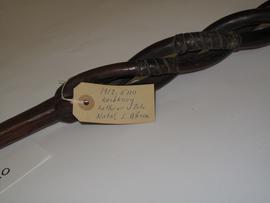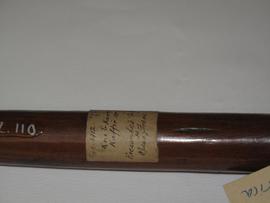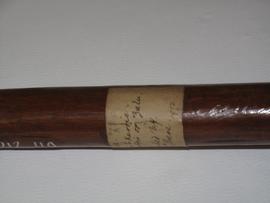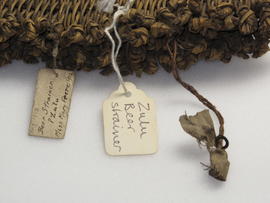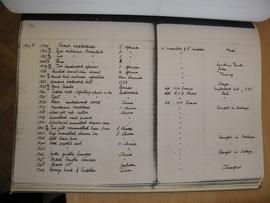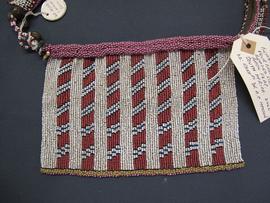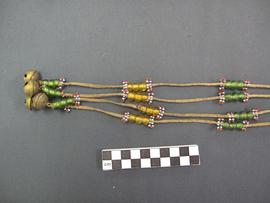Narrow your results by:
- All
- FHYA curation of items derived from the James Stuart Papers at the Killie Campbell Africana Library, 1155 results
- FHYA curation of a selection from the uMgungundlovu Archaeological Material at AMAFA, 1142 results
- FHYA curation of a selection of the Swaziland Oral History Project from Historical Papers, University of the Witwatersrand, Johannesburg, 762 results
- FHYA selection from the Anthropological Collection at the Museum of Archaeology and Anthropology at the University of Cambridge, 675 results
- FHYA curation of selected materials from the Traditional Collection at the Johannesburg Art Gallery, 596 results
- FHYA curation of selected Bews Herbarium Ethnobotanical materials, 498 results
- FHYA curation of a selection from the Archaeological Collections at the KwaZulu-Natal Museum, 328 results
- FHYA curation of a selection from the Anthropological Collection at the KwaZulu-Natal Museum, 305 results
- FHYA curation of selected materials from the Phonogrammarchiv at the Austrian Academy of Sciences, 213 results
- FHYA curation of selected materials pertinent to Alfred Cort Haddon’s trip with the British Association for the Advancement of Science (BAAS) to South Africa in 1905, from the Department of Manuscripts and Archives at the Cambridge University Library, 95 results
- All
- Killie Campbell Africana Library (KCAL), 1156 results
- Amafa / Heritage KwaZulu Natali - provincial heritage conservation agency (AMAFA), 1143 results
- Historical Papers, University of the Witwatersrand, Johannesburg (WITS), 763 results
- Museum of Archaeology and Anthropology, University of Cambridge (MAA), 676 results
- KwaZulu-Natal Museum (KZNM), 635 results
- Johannesburg Art Gallery (JAG), 597 results
- Bews Herbarium (NU), 499 results
- Austrian Academy of Sciences (ÖAW), 214 results
- Private Collections hosted by the FHYA, 156 results
- Cambridge University Library (CUL), 96 results
- All
- Five Hundred Year Archive (FHYA), 6024 results
- Amafa / Heritage KwaZulu Natali - provincial heritage conservation agency (AMAFA), 1143 results
- No attribution, 1121 results
- Killie Campbell Africana Library (KCAL), 931 results
- Reverend Father Franz Mayr, 899 results
- John Wright, 780 results
- James Stuart, 777 results
- Museum of Archaeology and Anthropology, University of Cambridge (MAA), 771 results
- Frans Roodt, 667 results
- Historical Papers, University of the Witwatersrand, Johannesburg (WITS), 653 results

